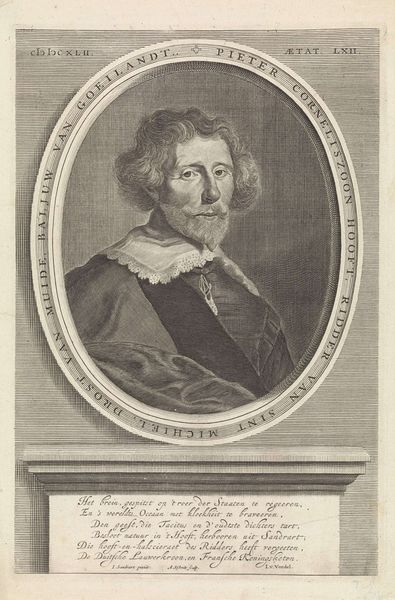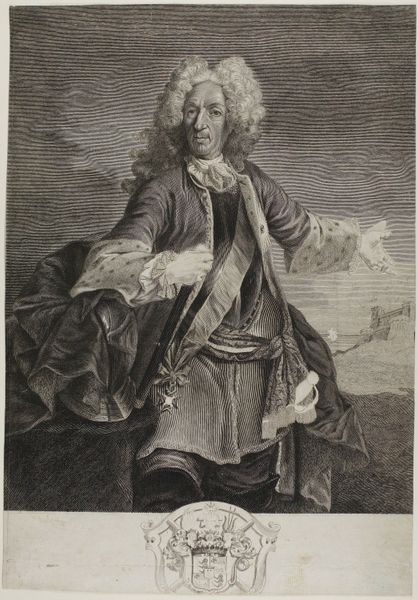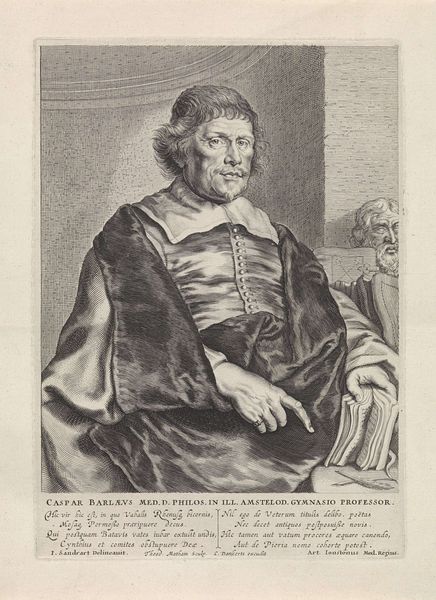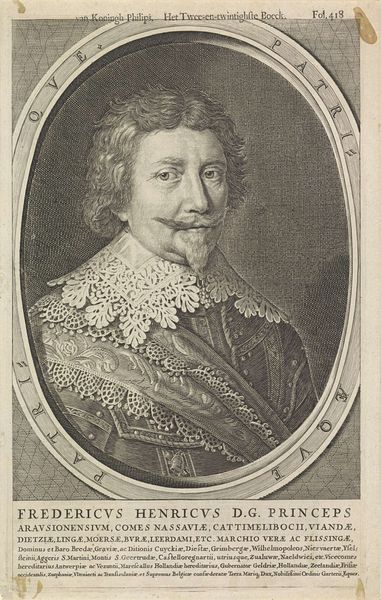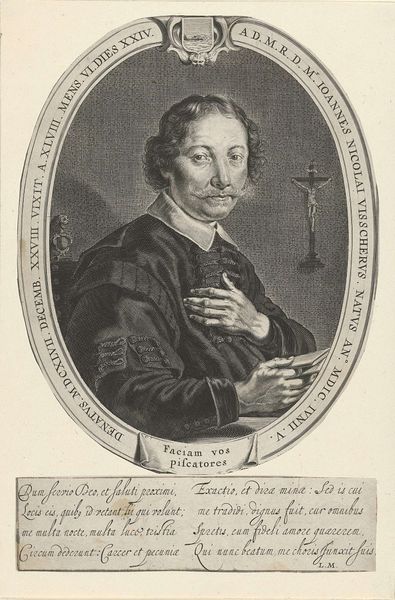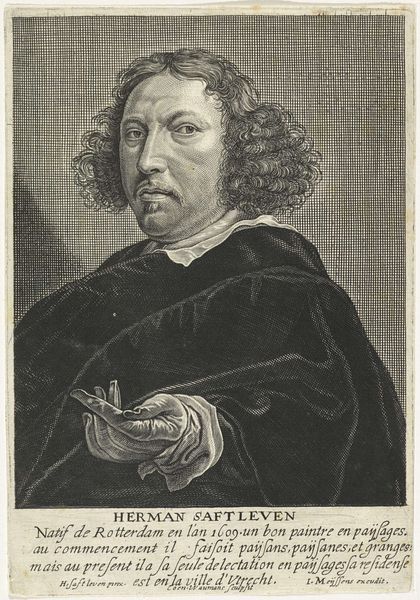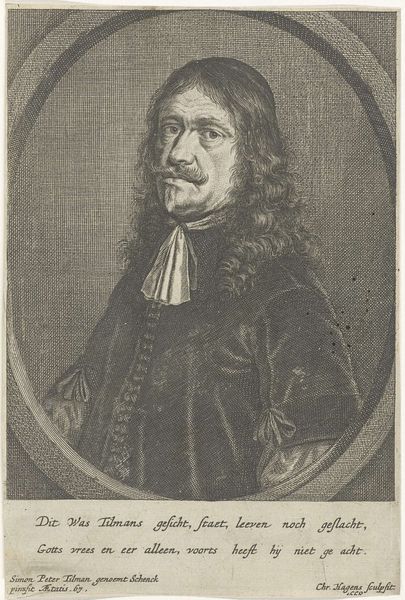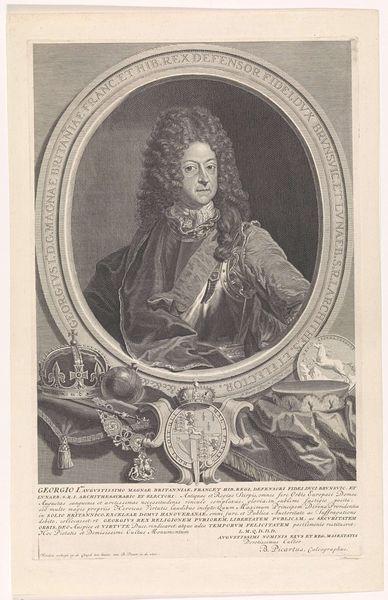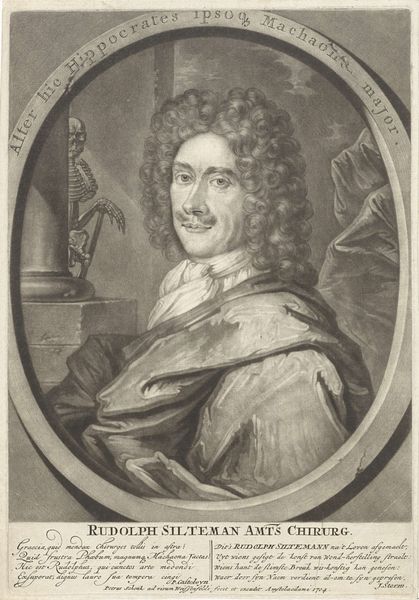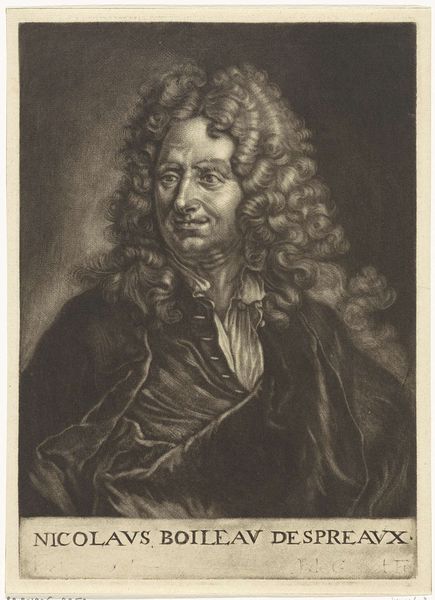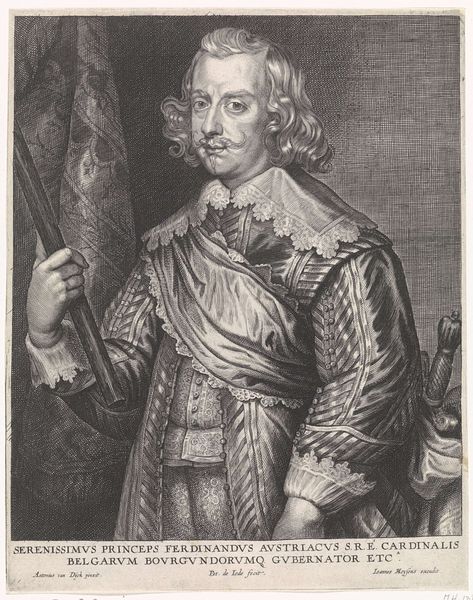
#
wedding photograph
#
photo restoration
#
old engraving style
#
archive photography
#
historical photography
#
portrait reference
#
old-timey
#
yellow element
#
19th century
#
yellow accent
Dimensions: height 280 mm, width 196 mm
Copyright: Rijks Museum: Open Domain
Editor: Here we have Reinier van Persijn’s “Portret van Pieter Corneliszoon Hooft,” created in 1642. The level of detail in the engraving is remarkable. What do you see in this piece? Curator: Well, looking at this portrait through a historical lens, several things stand out. Firstly, consider Hooft's status and the function of this portrait. The prominent display of his accolades in the inscription suggests a desire to publicly solidify his image and legacy. Do you notice the objects around him? Editor: Yes, there’s a globe and what looks like a sword, suggesting his status and perhaps interests. Curator: Precisely. These are carefully chosen props intended to communicate power and intellect. The globe refers to the expansion of Dutch power through international trade and military expansion, while the sword points to Hooft's public function. It also makes me consider who commissioned this print, how widely it was circulated, and the role these images played in shaping public perception of prominent figures. Did they reinforce the existing hierarchy? Editor: That’s a fascinating question. Were such portraits always flattering, or did they sometimes serve other purposes? Curator: Not always flattering, but usually strategically constructed. The aim would be to convey a certain message aligning with political goals or consolidating their influence. Editor: So, the image isn’t just a representation, but an active player in its own historical context. It’s not only *what* is shown, but *why* and *how*. Curator: Exactly. And thinking about distribution networks - how would copies of the engravings travel? Who were the target audiences in the Netherlands and abroad? All of these facets shaped our perception of Pieter Corneliszoon Hooft then, and still inform it today. Editor: I hadn't thought about how many layers of meaning are embedded within something that, at first glance, just seems like a historical portrait.
Comments
No comments
Be the first to comment and join the conversation on the ultimate creative platform.
